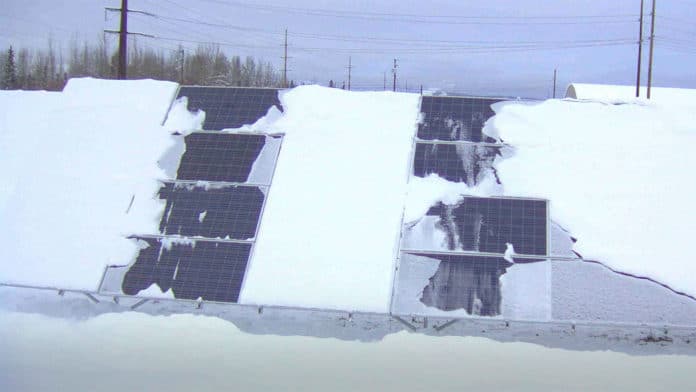Renewable energy is really taking off right now, but snow is a huge problem in northern climates. Solar panels might lose 80 or 90% of their generating capacity in the winter.
In an advance that could dramatically improve the productivity of solar panels in cold climates, a University of Michigan-led team has demonstrated an inexpensive, clear coating that reduced snow and ice accumulation on solar panels, enabling them to generate up to 85% more energy in early testing.
The proposed coating solution is claimed to effectively melt ice and snow with temperatures down to -35 degrees Celsius. It is made of PVC or PDMS plastic and silicon or vegetable-based oils, which can be sprayed or brushed on in cold weather and, in its current iteration, can keep shedding snow and ice for up to a year.
Designing a coating that can passively shed both snow and ice represents a special challenge. To find the right coating, Anish Tuteja, U-M professor who led the study, and his team turned to two key properties that have powered their previous ice-shedding coatings in the past: low interfacial toughness and low adhesion strength.
The team worked to strike precisely the right balance of low surface adhesion and low interfacial toughness that would repel both ice and snow from small and large surfaces alike. They started with very rigid PVC plastic for low interfacial toughness and mixed in a small amount of vegetable oil, giving PVC a low enough surface adhesion to provide the best of both worlds. They also devised a second material that works equally well using PDMS plastic and silicon-based oil.
Researchers tested the material on a solar field in Fairbanks, Alaska, applying the coating to a subset of panels that were monitored by automated cameras for about two weeks. The tests showed that the coated panels had an average snow and ice coverage of approximately 28% over an entire winter season compared to about 59% for the uncoated panels.
While the current iteration of coating could be used immediately, the team plans to tweak it further with the aim of developing a coating that can last at least five years.
